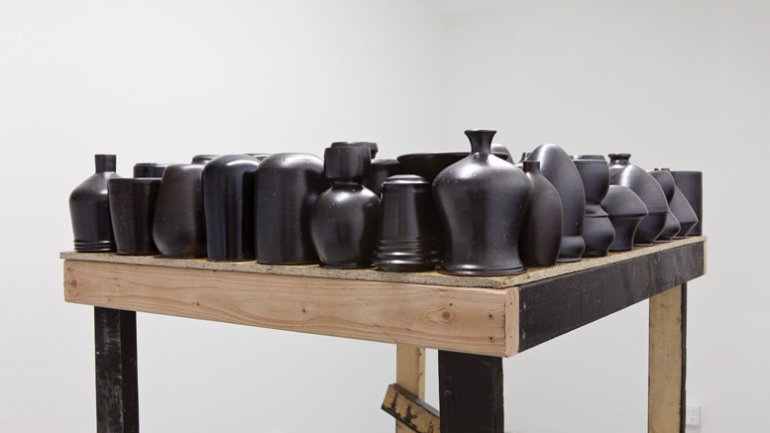Catalyst in Clay
Catalyst in Clay
What does it mean to be a young black artist grappling with the complexities of identity in the 21st century? How does that manifest itself? It can be easy to dismiss such concerns as a millennial obsession with “identity politics.” But that ignores the rigor with which many artists question, complicate, and respond to our ever-evolving sociopolitical environment. For St. Louis artist Kahlil Robert Irving, attending to these matters involves mining the history of decorative arts to engage in wider dialogues about conditions of blackness.
Irving is a multimedia artist unafraid of being provocative. “I’ve been making in a variety of ways all my life. I didn’t go to art school to become the next Leonardo da Vinci. I’ve always found myself engaged in acts of making as a tool for questioning,” says Irving, 25, who earned his BFA from Kansas City Art Institute in 2015 and his MFA from Washington University in 2017. His sculptures and installations are tender, astute meditations on race that are rooted in history and respond to contemporary social and cultural realities. He uses the history of the encyclopedic museum as a jumping off point to explore connections between the conceptual frameworks of decorative art collections, industrially made products, reportage, and textual production, he says. To this end, his studio practice not only involves the physical acts of casting a form, but also research on subjects such as St. Louis’ brickmaking history and the origin of the museum as an institution.
It’s an exploration that people are following closely. Critics lauded Irving’s 2017 solo exhibition, “Streets: Chains: Cocktails,” at Callicoon Fine Arts in New York City. He also had pieces in “Ephemera,” a group exhibition in conjunction with the International Sculpture Conference in Kansas City in October.
Trained in art history and ceramics, Irving extends his practice well beyond functionality, as he reckons with the vastness of blackness. In Undocumented, an ongoing series of glazed stoneware vessels he started in 2014, viewers might be tempted to read the works as utilitarian objects, yet they are much more. The vessels range in size, shape, and texture, but are always black, a deliberate decision to acknowledge “the presence of the object and the presence of the person who made the object,” Irving says. The works carry titles such as Before and After Sundown, Town and ConcernedStudent1950; or the Johnson Family Reunion, referring to the gathering and marching of black people, in a material form unbound by convention.
“The sculptures can be metonymic representations for particular lived experiences and deeply connected to the aesthetic traditions of ceramics,” Irving says. Indeed, he brings a deep knowledge of sculpture and ceramics to his work. Yet in his versatile practice, the ceramist also transgresses disciplines, widening the scope of representational aesthetics beyond the human figure.
Irving invites viewers to wrestle with one question in particular: Does America actually love its black children? In 2017’s Soul Sitters (Still Standing), two black stoneware vessels stand defiantly. This work and its companion pieces such as Stand: Soul Sitter and Soul Sitter: Preserving Blackness suggest that even if America has not quite figured out how to care for all of its daughters and all of its sons, black folks persist. They remain standing. Many Men, many, many, many, many men wish death pon me; Lord I don’t cry no more, Look to the sky no more; and Have mercy on me (2017), three flags named after the chorus of “Many Men (Wish Death)” by rapper 50 Cent, conjure a spirit of both melancholy and triumph, an intertwined ethos connected to black experiences in this country. “On some level, I am always pulling at this tension in my work,” Irving says.
For some, it’s a controversial concern to raise – and yet, in the artist’s hands, it isn’t off-putting; it is simply an interrogation we must confront.

